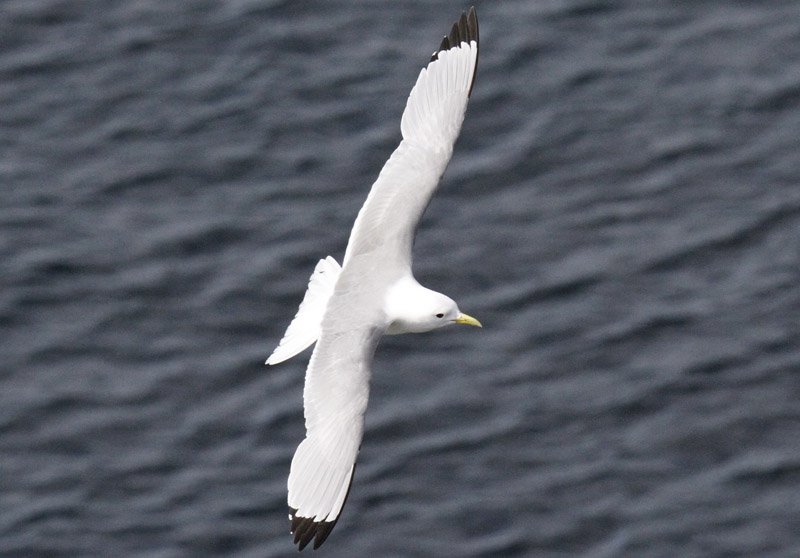If you think sparrows are tough to identify, you are not alone. After all, there is a reason for the expression “little brown job.” Many of the sparrows look alike, differing only slightly in shape, size and coloration. And to make matters worse, juveniles often look different from the adults. Yet they can be identified with practice.
To me, grasshopper sparrows are one of the more difficult to identify, perhaps because they are seldom seen. They are not common and they typically live in grasslands where they mostly remain on the ground between the clumps of native plants. So even when they are present they are hard to see. Their population is declining, and they are listed as a threatened species under the Massachusetts Endangered Species Act.
Their scarcity makes Tim Spahr’s Oct. 14 sighting of a cooperative grasshopper sparrow quite remarkable. The bird did not stay hidden within the vegetation and spent some time hopping around in plain sight. It had a buffy breast with indistinct streaking, a darkish brown crown with a pale stripe down the middle, and a fairly prominent eye-ring. It was an adult grasshopper sparrow.
Grasshopper sparrows were not observed during the breeding season this year. No birds were found at the two historic breeding sites. These sparrows have been absent from their Katama nesting colony for years (decades?) and no birds were observed this year where they have nested annually at the Martha’s Vineyard Airport. A third site near Tisbury Great Pond has had two to four breeding pairs in recent years, but it was not checked this year. Apparently, their closest breeding location is on Naushon island and at the Massachusetts Military Reservation on Cape Cod.
This is the Vineyard’s first confirmed sighting of a grasshopper sparrow this year. It is a confirmed sighting because it was photographed. Otherwise, two people would have had to see it and provide good descriptions.
Bird Sightings
Mr. Spahr was birding the Island on Oct. 13 and 14, and among the 89 species he found were several other species that were first time sightings for the fall season. They include: an adult black-legged kittiwake observed over the ocean from the Gay Head Cliffs, a yellow-breasted chat observed in a thicket near the parking lot at the cliffs, six great cormorants at Squibnocket Point, a Virginia rail in a cattail marsh at Squibnocket Pond, a Wilson’s Snipe at Katama and a vesper sparrow at the Farm Institute.
My Oct. 24 guided birding tour found six buffleheads on Seth’s Pond, a first sighting for the fall season. They were diving in unison and spent more time underwater than they did on the pond’s surface.
Other notable but less unique sightings by Mr. Spahr include ruddy turnstone, white-rumped sandpiper, lesser black-backed gull, eastern wood-pewee, Philadelphia vireo, red-eyed vireo, house wren, brown thrasher, 10 other species of warblers (Nashville, yellowthroat, American redstart, magnolia, blackpoll, black-throated blue, palm, pine, yellow-rumped and prairie), Lincoln’s sparrow, swamp sparrow, blue grosbeak, indigo bunting and Baltimore oriole. Certainly an impressive list.
Randy Rynd reports finding a flock of black-crowned night-herons off Flander’s Lane in Menemsha on Oct. 15. There were at lest 10 adults and a number of immature night-herons, but other than these birds they have been unusually scarce this fall. She also reports several kingfishers and a great egret from the same location.
Lanny McDowell visited Quenames and Black Point Pond on Oct. 23. His highlights include a large flock of sanderlings, six lesser black-backed gulls, an eastern bluebird, six turkey vultures and a partially leucistic Canada goose with a little bit too much white on its head and chin.
On Oct. 24, John Nelson found two black skimmers still hanging out at Eel Pond, an immature little blue heron in the marshes along Sengekontacket Pond, six dark-eyed juncos at the Farm Institute, and 12 brant at the Inkwell Beach in Oak Bluffs. Stephanie Mashek also observed the brant that day.
Joe Jims observed an American oystercatcher on the Oak Bluffs side of the big bridge on State Beach on Oct. 24. Also on Oct. 24, my guided birding tour searched for last week’s rusty blackbirds and yellow-headed blackbird without success. Our best birds from that cornfield were a golden-crowned kinglet low in a juniper and an immature Baltimore oriole that momentarily perched atop of a nearby juniper.
Bob Shriber reports that the harlequin ducks have returned to the ocean near Squibnocket Point. There were six of them on Oct. 26. He also found a vesper sparrow at the Aquinnah circle that morning.
Luanne Johnson reports that she has seen a ruby-crowned kinglet, a Carolina wren and a screech owl in her yard. On Big Gravel island in the northwest corner of Sengekontacket Pond, she has observed an American oystercatcher and a flock of up to 20 greater yellowlegs, while at nearby Farm Neck she has seen a flock of 15 robins and at least 20 cedar waxwings.
On a final note, Luanne Johnson is now the compiler of our annual Christmas Bird Count, and she informs me that this winter’s count will be held on Saturday, Jan. 2, 2016. Please plan ahead so you will be here to participate in the field or at your feeder.
There are lots of birds around, so please get out looking for them, and be sure to report your bird sightings to birds@mvgazette.com.
Robert Culbert leads Saturday morning guided birding tours and is an ecological consultant living in Vineyard Haven.






Comments (1)
Comments
Comment policy »